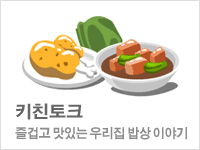한학기가 넘도록 수요일마다 연설문 외우기와 영어구문 공부,거기다가 요리 교실까지 즐겁게 만나던
모임이 각자의 사정으로 계속하기 어렵게 되었습니다. 그렇다면 그 시간을 어떻게 유용하게 쓸까 한 주동안
고민하다가 오늘부터 아침 일찍 만나서 지혜나무님과 피카소에서 폴락까지라는 전시회 도록을 한 권 함께
읽기로 했습니다 .그 책은 언젠가 그녀가 뉴욕에 갔을 때 본 전시회에서 도록을 구해 온 것이라고 하더군요.
제겐 아직 몸도 깨기 전인 9시에 수업을 시작하게 된 이유는 그녀의 아이가 초등학교에 갓 입학한 상태라
교문까지 바래다 주는 모양이어서 집에 들어갔다가 다시 나오는 것은 아무래도 어려울 것 같아서 제 나름의
배려를 한 것인데요, 덕분에 저도 조금 빠르게 수요일 아침을 시작하게 되었네요.
그녀와의 만남이 반갑기도 하지만 유익한 이유는 제게 낯선 것들이 제 안으로 자꾸 들어오게 되는 경험때문인데요
오늘도 역시 그런 시간이 되었습니다.
오늘 함께 읽은 화가의 바이오그라피는 아키펭코, 베크만, 브라크,그리고 부랑쿠지입니다.
물론 간단한 내용이라서 그렇게 여러 명을 읽을 수 있었지요. 다만 그것이 기초가 되어 집에 들어오니
당연히 그들에 대해서 찾아보게 되는 씨를 뿌리는 시간이라고 할까요?
다음 시간에는 그들의 작품을 책안에서 찾아서 읽기로 했습니다.
Alexander Archipenko biography
Alexander Archipenko (1887 - 1964)
Russian-born sculptor who became an American citizen in 1928. He studied at the art school in his native Kiev from 1902 to 1905, when he was expelled for criticizing the academic attitudes of his teachers. In 1906 he moved to Moscow and in 1908 to Paris, where he left the Ecole des Beaux-Arts after two weeks' study, again showing his impatience of discipline. Instead, he studied ancient and medieval sculpture in the Louvre, and some of the work of his early years in Paris (mainly female figures) is in a primitivistic manner recalling Egyptian art. In about 1910, however, he was introduced to Cubism by Leger (whose studio was near his own) and he became one of the outstanding sculptors of the movement. In works such as the bronze Walking Woman (Denver Art Museum, 1912) he analysed the human figure into geometrical forms and opened it up with concavities and a central hole to create a contrast of solid and void, thus ushering in a new sculptural idiom: George Heard Hamilton writes that 'This is the first instance in modern sculpture of the use of a hole to signify more than a void, in fact the opposite of a void, because by recalling the original volume the hole acquires a shape and structure of its own'. In the same year, with Médrano I (destroyed), Archipenko began making sculptures that were assembled from pieces of commonplace materials, parallelling the work of Picasso; Médrano II (Guggenheim Museum, New York, 1913) is made of painted tin, wood, glass, and painted oilcloth. (Médrano was the name of a circus in Paris much frequented by artists; these two figures represented performers there.)
Archipenko quickly built up a reputation in France and elsewhere, particularly in Germany. In 1912 he had a one-man exhibition at the Folkwang Museum in Hagen and in 1913 one at the Sturm Gallery in Berlin; also in 1913 his work was included in the Armory Show in New York. His rise to international prominence was interrupted by the First World War, during which he lived in Cimiez, a suburb of Nice; his work of this period included a number of sculpto-paintings, a type of work he created in which forms project from and develop a painted background. After the war he soon relaunched his career, organizing an exhibition of his work that toured widely in Europe in 1919-21 (Athens, Brussels, Geneva, London, Munich, among several other cities). He also exhibited at the Venice Biennale in 1920, on which occasion his work was condemned by a Venetian cardinal. His first one-man show in the USA was given by the Société Anonyme in New York in 1921. At this period he was undoubtedly the best known and most influential of all Cubist sculptors.
From 1921 to 1923 Archipenko lived in Berlin, where he ran an art school, then emigrated to the USA. He lived, worked, and taught in various places, but chiefly in New York, where he directed his own school of sculpture from 1939 until his death. The work he did in America did not compare in quality or historical importance with that of his European period, but he continued to be highly inventive. In 1924, for example, he invented the Archipentura (a kind of Yinetic painting), and after the Second World War he experimented with 'light' sculptures, making structures of plastic lit from within. His work was influential in both Europe and America, notably in the revival of polychromy, in the use of new materials, and in pointing the way from the sculpture of solid form towards one of space and light.

이 시간에는 둘이서만 공부하느냐고요? 물론 참가하고 싶은 사람들에겐 문이 열려 있습니다.
그녀가 가고 나서 .수요일 일어모임에 참가했습니다. 오랫만이라 (처음 만들어서 함께 공부하다가
제가 수유너머에 참가하는 바람에 송승은씨가 줄곧 리더로서 모임을 이끌어 왔으나 올해 초 돌연히
제주도로 이사를 한 바람에 조금 걱정이 되어 지난 주 그 모임을 함께 시작했던 분에게 연락을 해보니
리더가 없어진 관계로 약간 불안해하더라고요. 사실 남은 멤버만으로도 충분히 할 수 있으련만
처음이라 그런 것이겠지요?

일단 멤버 4명과 만나서 어떤 식으로 진행되고 있는지 확인한 다음, 조금 방식을 바꾸어 보자고 권했습니다.
일본 소학교, 중학교 책을 읽어나가고 또 하나는 무작정 따라하기 회화편 책을 하고 있는 중인데
그 과정이 끝나기 까지는 저는 참여하지 않는대신 앞시간에 모여서 3일만에 운이 좋아지는 청소의 힘이란
책을 함께 읽어보자고 했습니다.
한글이 하나도 없는 책이라고 겁을 먹는 사람도 있어서 함께 하면 충분히 할 수 있다고 진정을 시킨 다음
복사를 해서 두 페이지 정도 함께 읽었습니다. 이 정도면 더 재미있는 책이 아닌가, 사실은 일본 중학교 책의
어려운 한자보다는 쉬운 글이다, 그러니 이 책을 앞 시간에 함께 읽으면 어떤가, 그리고 가능한 사람은
일교시에 미술책 읽으러 나오라고 권하기도 하고요. 그래서 일단은 그 책을 구해서 함께 읽는 일에
다들 동의를 하게 되었네요. 덕분에 이번 학기의 새로운 수요일은 그렇게 시작되었습니다.

지금 그들이 함께 읽고 있는 책이 끝나면 한 번 제대로 문법 공부를 함께 하면 서로 도움이 될 것 같네요.
저도 끝까지 문법을 본 적이 없어서 번역상 어렵게 느껴지는 것들이 많아서요.
나도 일본어 하고 싶다던가 아니면 현대미술에 관심이 있다던가 그런 사람들이 있다면 언제라도 합류가
가능합니다. 혼자서 하기 어려운 일도 함께 가는 동료가 있다면 조금은 쉽게 진입장벽을 넘을 수 있으니까요.




 회원정보가 없습니다
회원정보가 없습니다